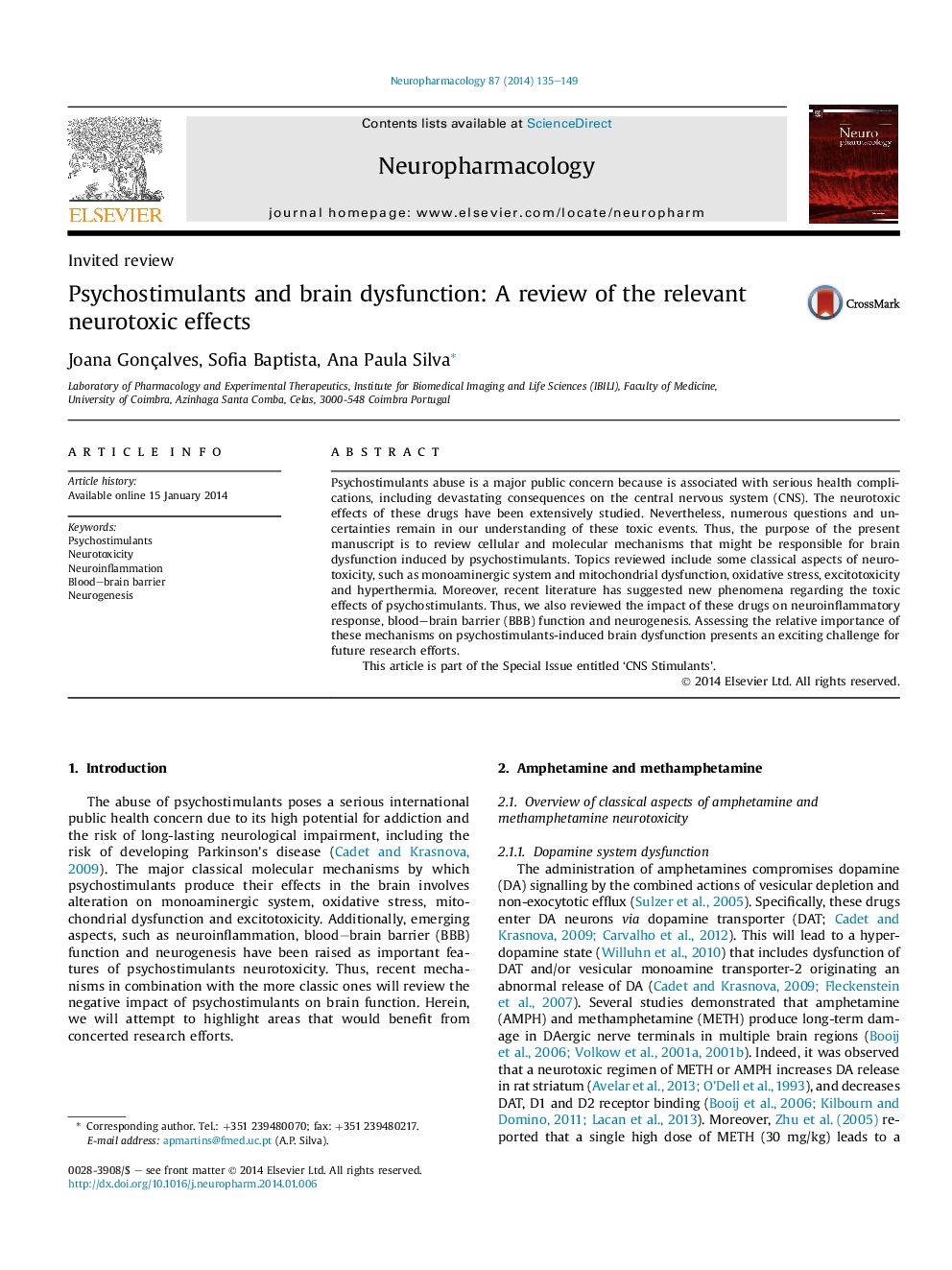| کد مقاله | کد نشریه | سال انتشار | مقاله انگلیسی | نسخه تمام متن |
|---|---|---|---|---|
| 5814355 | 1556627 | 2014 | 15 صفحه PDF | دانلود رایگان |
- We review the most relevant neurotoxic effects of psychostimulants.
- Neurotransmitter system homoeostasis is altered by psychostimulant use.
- Psychostimulants interfere with mitochondrial metabolism and enhance oxidative stress.
- Psychostimulants lead to neuroinflammation, and impair BBB function and neurogenesis.
- Unravel the cellular mechanisms of psychostimulants-induced neurotoxicity is critical.
Psychostimulants abuse is a major public concern because is associated with serious health complications, including devastating consequences on the central nervous system (CNS). The neurotoxic effects of these drugs have been extensively studied. Nevertheless, numerous questions and uncertainties remain in our understanding of these toxic events. Thus, the purpose of the present manuscript is to review cellular and molecular mechanisms that might be responsible for brain dysfunction induced by psychostimulants. Topics reviewed include some classical aspects of neurotoxicity, such as monoaminergic system and mitochondrial dysfunction, oxidative stress, excitotoxicity and hyperthermia. Moreover, recent literature has suggested new phenomena regarding the toxic effects of psychostimulants. Thus, we also reviewed the impact of these drugs on neuroinflammatory response, blood-brain barrier (BBB) function and neurogenesis. Assessing the relative importance of these mechanisms on psychostimulants-induced brain dysfunction presents an exciting challenge for future research efforts.This article is part of the Special Issue entitled 'CNS Stimulants'.
Journal: Neuropharmacology - Volume 87, December 2014, Pages 135-149
